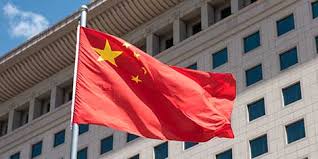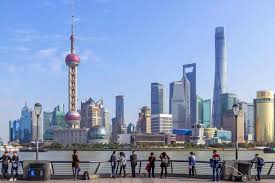
How China fights protracted war” for prosperity amid uncertainties
China Economic Net
Beijing: In coping with the disruptions from the COVID-19 epidemic and global economic slowdown, China’s leadership has emphasized the need to steer the world’s second-largest economy as if fighting a protracted war.
It called for the quickened establishment of a new development pattern which gives full play to the advantages of a huge domestic market, so that domestic and foreign markets can boost each other. It also said the domestic market should be the mainstay, emphasizing the need to tackle challenges from a protracted-war perspective.
“Since many problems we face are long- and medium-term, resolving such problems is like fighting a protracted war,” the Political Bureau of the Communist Party of China (CPC) Central Committee noted in a meeting on July 30 where arrangements for the economic work for the second half of the year were made.

Although this new development pattern puts more emphasis on self-sufficiency, it’s improper to interpret it as a policy shift to less opening-up or less active interaction with foreign markets.
A commentary run by the People’s Daily, the CPC flagship newspaper which local authorities tend to take as a reference for policy interpretation, noted that taking the domestic market as the mainstay is “absolutely not an operation behind closed doors.” It is there to exploit the potential of domestic market demands to facilitate better connectivity between domestic and foreign markets for more resilient and sustainable growth.
The new development pattern, or dual circulation, is more of a solution proposed by China in tough times to boost both its economic resilience and that of the world’s.
As overseas demand is expected to remain subdued due to the global coronavirus pandemic, the political bureau meeting urged efforts to keep expanding domestic demand, counteract the impact of COVID-19, boost final consumption and create conditions for consumption upgrading.
If the demand of the country’s 1.4-billion-people market (and its 400 million middle-income earners in particular) is properly unleashed and well met, it is expected to provide forceful support for China’s economic recovery. A solid recovery of the Chinese economy will in turn help boost global morale in pursuing post-pandemic growth.
On the supply side, China has taken multi-pronged measures, from tax and fee cuts to targeted financing support, to protect the supply chain from succumbing to epidemic shocks and retain the vitality of market entities.
If the Chinese economy managed to rebound steadily, analysts say more spillover effects can be expected across the world.
For domestic analysts, the “protracted-war” approach also reflects China’s resolution to maintain strategic focus in a time full of uncertainties for high-quality development.
Instead of being distracted by short-term disruptions, the Chinese leadership has been steadfast in grasping the current development opportunities to approach major issues concerning China’s development from a longer-term, strategic and systematic perspective, said Zhang Zhanbin, head of the School of Marxism at the Party School of the CPC Central Committee.
In October, the CPC Central Committee will meet to outline the 14th five-year plan covering the period from 2021 to 2025, as well as a longer-term vision for 2035. In the near term, a range of development milestones, from poverty alleviation to completing the building of a moderately prosperous society, needs to be accomplished.
Dong Yu, executive deputy dean of the China Institute for Development Planning at Tsinghua University, agreed with a combination of short-term responses and long-term planning in making arrangements for the economic work for the rest of the year and beyond.
“On the one hand, in coping with the possible economic fallouts of COVID-19, more consideration should be given to difficulties and challenges. On the other hand, solid foundations need to be laid for future social and economic development,” he said.
To fulfill targets and tasks, the political bureau meeting added emphasis for full implementation of macro policies, calling for pursuing a more proactive and effective fiscal policy that delivers solid outcomes, and a more flexible and appropriate monetary policy that targets sound results.
It signaled clearly that China will further ease the burden on market entities and promote the development of the real economy, said Zong Liang, chief researcher of the Bank of China. “With the policies more targeted and robust, the economy will continue to develop within the appropriate range,” he said.
Shortly after the meeting, relevant authorities began to hold their mid-year work conferences to transform the top leadership’s arrangements into detailed policies.
The People’s Bank of China, for instance, said on Monday that it will promote a full implementation of the foreign investment administration model of pre-establishment national treatment plus a negative list, advance the internationalization of the renminbi and capital account convertibility proactively and soundly, and unify the foreign exchange management policies applied in the opening-up of China’s bond market.
It will also be deeply involved in global financial governance, and safeguard multilateralism, the central bank said.
The China Securities Regulatory Commission said in a statement that it would continue to open up markets, industries and products to foreign investors, while simultaneously stepping up oversight to forestall risks.
Looking forward to the next five-year plan, Zhang Zhanbin was impressed by the “five musts” stressed at the political bureau meeting, which involves upholding and optimizing the mechanism of the Party in governing economic and social development, serving the people, implementing new development concepts in all sectors, advancing reform and opening-up, as well as improving prospective thinking, overall planning, strategic layout and integrated implementation.
“These five musts represent the valuable experience of China’s economic development, which stresses optimizing economic governance from a holistic approach, and striking a dynamic equilibrium among multiple targets,” he said.
In its encounter with COVID-19, China has so far delivered a better-than-expected performance, with its gross domestic product surging by 3.2 percent year on year in the second quarter, following a 6.8 percent contraction in the first three months. Investment, consumption, industrial output and manufacturing all showed an improved outlook.
